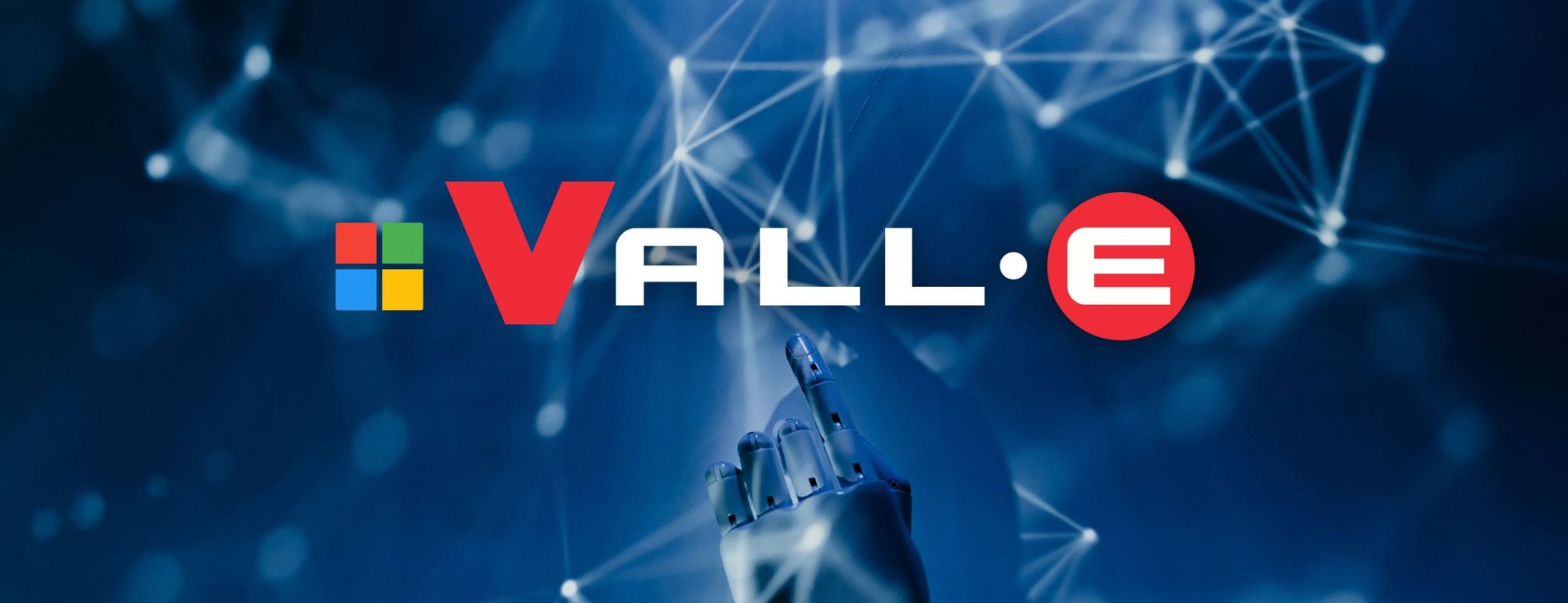Exploring Microsoft's VALL-E: A Milestone in Realistic AI Voice Synthesis

Decoding VALL-E: Microsoft's Leap in Realistic AI Voice Generation
In the relentless pursuit to bridge human and computer interaction, Microsoft's AI-driven system VALL-E marks a significant milestone. With the ability to replicate individual voices with minimal audio input, VALL-E stands at the cutting edge of TTS technology. For industry experts, and specifically American university research scientists and lab software engineers well-versed in Python, Java, and Javascript, VALL-E's advancement sparks a cascade of possibilities, from creating highly personalized user experiences to developing tools for those with speech impediments. This breakthrough underscores the tech giant's commitment to advancing deep learning and machine learning techniques within the audio development landscape, reflecting the depth of research and innovation emanating from Microsoft's labs.
The emergence of VALL-E accentuates the technological marvel that the field of synthetic voice generation has become. Gone are the days of robotic monotones; in their place stands a nuanced mimicry that's nearly indiscernible from human speech. As VALL-E continues to develop and integrate within various platforms, pertinent questions arise about its scalability, ethical concerns surrounding voice imitation, and the potential to generate real-time speech across languages and dialects. The implications for TTS API usage are profound, promising not just strides in realism but also in making technology more accessible, inclusive, and diverse.
| Topics | Discussions |
|---|---|
| Unveiling VALL-E: Microsoft's Breakthrough in Voice Mimicry | This section provides an overview of Microsoft's VALL-E system, highlighting its capabilities to accurately mimic human voices using AI. |
| Microsoft's VALL-E: Echoes of Human Speech | Exploring VALL-E's innovative approach to generating speech that echoes the nuances of human expression, achieved through machine learning. |
| Understanding AI in Voice Synthesis | Focusing on the AI technologies underpinning voice synthesis to understand how systems like VALL-E create natural-sounding speech. |
| Technical Guides for Unreal Speech API | Detailed instructions for developers on implementing Unreal Speech API into their projects, complete with sample code and best practices. |
| Optimizing User Experience: Best Practices in TTS Applications | Anticipating forthcoming advancements in TTS technology, considering the potential impact of current research and industry trends. |
| Common Questions Re: Realistic Voice TTS | Answers to common queries about generating realistic voices through TTS and the leading technologies that enable this capability. |
Unveiling VALL-E: Microsoft's Breakthrough in Voice Mimicry
As we delve into the intricate nuances of Microsoft's VALL-E, understanding the key terminologies that define this state-of-the-art system is essential. VALL-E bridges the gap between artificial and human speech with an acumen that is rooted in its complex design and technology. This glossary of key terms unravels the specifics of TTS, machine learning (ML), and artificial intelligence (AI), providing a clear foundation for the groundbreaking work that makes VALL-E a paragon in voice replication technology.
VALL-E: Microsoft's advanced AI model capable of replicating individual voices with high accuracy from minimal audio samples.
TTS (Text-to-Speech): A technology that converts written text into synthetic spoken audio, aiming to sound as natural and realistic as possible.
Machine Learning (ML): A branch of AI focusing on building systems that learn from data, identify patterns, and make decisions with minimal human intervention.
Deep Learning: An ML technique using neural networks with multiple layers to analyze data, often used for complex tasks such as speech and image recognition.
Neural Networks: Computational models designed to recognize patterns and perform tasks by mimicking the structure and functionality of the human brain.
Audio Synthesis: The process by which machines generate sound waves that replicate human speech or other sounds.
Voice Replication: The AI-driven imitation of a person's voice pattern, including tone, pitch, and unique speech characteristics.

Microsoft's VALL-E: Echoes of Human Speech
Microsoft's VALL-E represents a seminal development in TTS AI technology, setting a new benchmark for synthetic voice realism as highlighted in the article by April Fowell from Tech Times. Reported on January 10, 2023, VALL-E's ability to emulate a person's voice from a brief audio sample is a testament to Microsoft's innovation in audio processing and synthesis. The technology behind VALL-E, while not elaborated on in the summary, is indicative of potentially leveraging groundbreaking neural network architectures that process auditory data to reproduce not just the sound but also the intricacies and personal traits of human speech.
The advancements hinted at in VALL-E's development suggest that the system may employ advanced learning algorithms, capable of deep analysis and neural pattern recognition. Such sophisticated methodology could allow VALL-E to achieve high-performance metrics in voice replication fidelity and user experience. Microsoft's continued research in machine learning, especially within AI for audio development, shows commitment to enhancing communication tools and expanding the boundaries of how we interact with technology.
While the summary provides a glimpse into VALL-E's capabilities, the full article likely describes, in detail, the comprehensive technical analysis required to understand the true extent of VALL-E’s innovation. Regarding the technical sections of information and details, discussions around the specific type of neural networks used, the structure of the learning algorithms, and the processing of variables like tone, cadence, and emotion in speech would be crucial for research scientists and laboratory software engineers dedicated to this field. To fully grasp the grasp the nuances and technical achievements of VALL-E, one would need access to the literature detailing its design, implementation strategy, and performance outcomes.
Understanding AI in Voice Synthesis
The conceptualization and creation of VALL-E, as reported by April Fowell of Tech Times, accentuates the strides made in AI and its integration into voice synthesis. Although the specifics of Microsoft's machine learning models and neural networks are not dissected in the provided summary, the underlying implication is that VALL-E utilizes highly advanced algorithms that can analyze and mimic subtle vocal nuances based on limited audio data. This marks a considerable leap beyond traditional voice synthesis, moving towards systems that offer unprecedented personalization and accuracy in voice replication tasks.
These advancements suggest a deep engagement with neural pattern recognition techniques, allowing for the accurate prediction and formulation of phonetic and prosodic speech elements. The AI models utilized for voice synthesis like VALL-E are likely to engage self-learning systems that continually refine their output based on a variety of inputs, thereby getting ever closer to naturally replicating the human voice's complexity and range.
The essence of leveraging AI within voice synthesis technologies like VALL-E lies in the ability to provide a seamless and realistic auditory experience that can be utilized across TTS platforms. This intersection of AI with linguistic modeling has the potential to transform communication aids, entertainment mediums, and create new interaction paradigms within the digital realm. As the capabilities of such AI systems evolve, so too does the fidelity and practical utility of synthesized speech, encapsulating a realm where artificial voices are indistinguishable from their human counterparts.
Technical Guides for Unreal Speech API
Getting Started with Unreal Speech API in Python
To implement the Unreal Speech API using Python, developers can use the standard 'requests' library to make a POST request to the API's '/stream' endpoint. This endpoint allows for synchronous, real-time TTS conversion of text up to 1,000 characters, which is ideal for applications that demand low-latency audio generation. The following code snippet details how to send a request with desired parameters and save the resulting audio to a file.
Required Python package: requests
import requests
Replace 'YOUR_API_KEY' and '<YOUR_TEXT>' with your credentials and desired text.
api_url = 'https://api.v6.unrealspeech.com/stream'
api_key = 'YOUR_API_KEY'
headers = {'Authorization': f'Bearer {api_key}'}
data = {
'Text': '<YOUR_TEXT>',
'VoiceId': '<VOICE_ID>', # Choose from available voices
'Bitrate': '192k', # Select desired bitrate: 320k, 256k, 192k
'Speed': '0', # Adjust the speed: range from -1.0 to 1.0
'Pitch': '1', # Adjust the pitch: range from 0.5 to 1.5
'Codec': 'libmp3lame', # Select the codec: libmp3lame or pcm_mulaw
}
response = requests.post(api_url, headers=headers, json=data)
if response.ok:
with open('audio.mp3', 'wb') as file:
file.write(response.content)
else:
print(f"Error: {response.status_code} - {response.text}")
Integrating Unreal Speech API into Java and JavaScript Projects
For JavaScript and Node.js applications, integrating the Unreal Speech API is just as straightforward. The Node.js environment enables developers to utilize server-side scripting to interact with the API. Below is a Node.js example which demonstrates how to perform a post request to the '/stream' endpoint of Unreal Speech API using the 'axios' package and save the synthesized speech.
const axios = require('axios');
const headers = {
'Authorization': 'Bearer YOUR_API_KEY',
};
const data = {
'Text': '<YOUR_TEXT>', // Up to 3,000 characters
'VoiceId': '<VOICE_ID>', // Scarlett, Dan, Liv, Will, Amy
'Bitrate': '192k', // 320k, 256k, 192k, ...
'Speed': '0', // -1.0 to 1.0
'Pitch': '1', // 0.5 to 1.5
'TimestampType': 'sentence', // word or sentence
};
axios({
method: 'post',
url: 'https://api.v6.unrealspeech.com/speech',
headers: headers,
data: data,
}).then(function (response) {
console.log(JSON.stringify(response.data));
});
These guides offer a step-by-step process for initiating a productive workflow with Unreal Speech API, demonstrating its application across different programming environments for TTS services.
Optimizing User Experience: Best Practices in TTS Applications
Unreal Speech's text-to-speech (TTS) synthesis API brings forth a revolution in auditory digital interfaces, making premium voice generation services widely accessible at a fraction of the cost. Academic researchers, who frequently require TTS for diverse projects, find in Unreal Speech a cost-effective way to realize their experimental designs, particularly in the study of language processing, cognition, and human-computer interaction. The platform's affordability allows those in the academic sphere to scale their research without sacrificing audio quality or the nuanced speech necessary for sophisticated analyses.
For software engineers and game developers, Unreal Speech offers an agile solution to introducing high-quality, lifelike voices into their applications and games. The API's swift response time and capacity to handle high-volume requests efficiently enable developers to create interactive and engaging experiences. Educators can utilize the platform's TTS capabilities to enhance learning materials, offering students new ways to engage with educational content, particularly benefiting those with learning disabilities who might prefer auditory over visual information.
The assurance of continuous service with 99.9% uptime and low-latency audio processing means TTS can be deployed reliably in apps and services requiring real-time performance. Furthermore, with upcoming multilingual support, Unreal Speech is poised to broaden its reach, providing a scalable TTS solution that resonates in a variety of linguistic contexts. The platform's commitment to improving and expanding its services promises a forward-moving trajectory in the TTS landscape, making it a valuable tool for innovators in this space.
Common Questions Re: Realistic Voice TTS
What Makes VALL-E the Most Realistic Voice Text-to-Speech?
VALL-E's notable feature lies in its cutting-edge neural network architecture, empowering it to mimic individual voices accurately and lending it distinction as one of the most realistic voice text-to-speech systems available today.
Creating Realistic Text-to-Speech: What Are the Best Practices?
The key to creating high-fidelity text-to-speech lies in utilizing advanced deep learning techniques and fine-tuning acoustic models, which together help in capturing and reproducing the subtleties of human speech.
At the Cutting Edge: What Are the Pioneering AI Voiceover Technologies?
Pioneering AI voiceover technologies like VALL-E are characterized by their innovative use of machine learning to analyze and recreate not just the sound but also the emotional undertones and nuances of the user's natural voice.